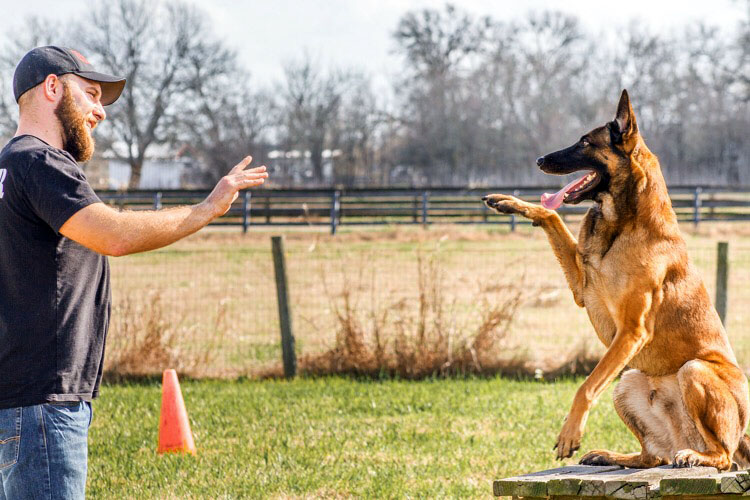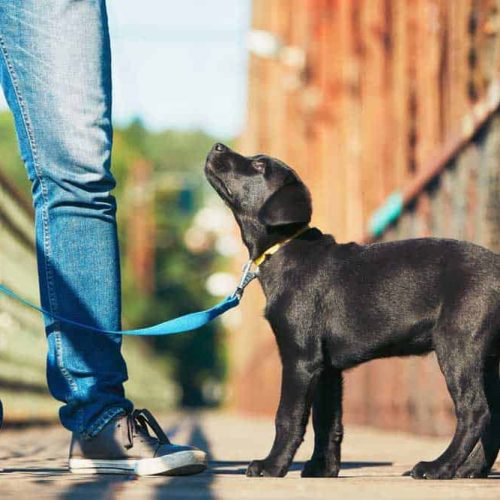Dog Training For Dogs: Proven Techniques to Curb Unwanted Actions
Dog Training For Dogs: Proven Techniques to Curb Unwanted Actions
Blog Article
Crucial Pet Dog Educating Tips for Raising a Well-Behaved Buddy
Reliable dog training is foundational to establishing a well-behaved and harmonious buddy. Crucial techniques such as very early socialization, the facility of consistent commands, and the application of positive reinforcement can dramatically influence a canine's habits and total disposition. Moreover, comprehending canine behavior is critical for customizing training techniques that reverberate with individual pet dogs. By fostering a cooperative environment amongst relative and adhering to a structured regimen, proprietors can enhance their training initiatives. Yet, the intricacies of these approaches advantage even more exploration to completely value their influence on cultivating a well-adjusted canine companion.
Comprehending Canine Behavior

Furthermore, socialization plays a vital role fit a pet's habits. Direct exposure to different atmospheres, people, and various other pets assists dogs create self-confidence and minimizes the possibility of fear-based reactions. Early socializing is especially essential, as experiences throughout the essential advancement period significantly affect a canine's long-term actions.
Additionally, understanding the concepts of learning concept-- such as positive support, negative reinforcement, and penalty-- can enhance training performance. Dogs are most likely to duplicate behaviors that produce favorable outcomes. Using consistent, reward-based training techniques cultivates a trusting connection in between the dog and its fitness instructor.

Fundamental Commands to Show
Instructing basic commands is an essential structure for efficient canine training and interaction. Dog Training For Dogs. These commands not just help develop a clear line of interaction between you and your pet, however they also advertise security and good actions in different situations
Beginning with essential commands such as "Sit," "Stay," "Come," "Down," and "Heel." Each command offers a particular objective; as an example, "Sit" can help relax a thrilled pet, while "Come" is crucial for ensuring your pet dog returns to you when called.
When introducing a new command, make use of a clear and consistent tone. Progressively enhance the period and range as your dog ends up being extra competent.
Uniformity is vital; practice commands day-to-day to reinforce knowing, and make sure all member of the family use the exact same commands to stay clear of confusion. Keep in mind that persistence is essential during this process, as different pet dogs might find out at various paces. Establishing these fundamental commands promotes an unified partnership and establishes the phase for advanced training in the future.
Positive Reinforcement Techniques
Positive reinforcement methods are extremely efficient approaches for motivating wanted habits in pet dogs. This training strategy entails rewarding your dog for exhibiting behaviors you wish to reinforce, thereby increasing the likelihood of those behaviors being repeated. Rewards can take various kinds, consisting of deals with, appreciation, or playtime, and ought to be tailored to what motivates your dog most.
Timing is essential in positive support. Incentives must be provided right away address after the preferred behavior occurs to develop a clear organization. If you want your pet to rest on command, reward them as soon as they rest, ensuring they understand what activity is being strengthened.
Consistency is an additional crucial element. Dog Training For Dogs. Use the very same commands and benefits each time to avoid complication. Slowly, you can phase out deals with for more intermittent incentives, such as verbal appreciation, to preserve the behavior without relying upon continuous external support
Additionally, it is essential to stay patient and prevent punishment, as unfavorable reinforcement can cause fear and anxiousness, eventually preventing training efforts. By applying positive support strategies, you will cultivate a trusting partnership with your canine, causing a well-behaved buddy.
Socialization and Interaction
Socializing and interaction are essential facets of a canine's growth that complement positive support techniques. Early direct exposure to varied atmospheres, individuals, and various other animals is vital for fostering a well-adjusted family pet. This procedure helps canines create self-confidence and adaptability, minimizing the chance of behavioral problems such as anxiety or aggression.
Begin socialization during the important developing home window, generally between 3 and fourteen weeks old. Present your puppy to various stimuli, including various audios, views, and appearances. Enroll in puppy classes or set up monitored playdates with various other pets to encourage positive interactions.
As dogs grow, remain to subject them to different experiences. Tasks such as sees to parks, pet-friendly shops, or area occasions can boost their social abilities and convenience degrees in strange setups.
Constantly check communications to ensure they are stress-free and positive. Comfortably reroute them and enable for gradual exposure at a comfortable rate if your pet shows indications of stress and anxiety or aggression. Through regular socializing and interaction, you prepared for a balanced, mannerly buddy with the ability of thriving in varied social circumstances.
Consistency in Training
Establishing uniformity in training is important for reliable communication in between a canine and its proprietor. Canines grow on routine and clear expectations, which aids them understand what actions is desired.
Uniformity also prolongs past commands; it encompasses the regulations established within the family. If a dog is not enabled on the furnishings, this guideline has to be enforced at all times. Blended signals can bring about behavioral problems, as the dog may end up being unclear about what serves.
In addition, all member of the family must get on the same page relating to training strategies and commands. If someone rewards a habits while one more lectures it, the dog may come to be distressed and dizzy.
Conclusion
In conclusion, executing important canine training suggestions promotes a get redirected here well-behaved buddy. Early socialization, consistent commands, and positive reinforcement are crucial components that contribute to effective training. Developing clear interaction and keeping a regular improves the canine's understanding of expectations, while patience ensures long-term success. Inevitably, these techniques grow a trusting relationship between the pet and its family members, promoting a harmonious living environment and a well-adjusted canine friend (Dog Training For Dogs).
Necessary methods such as early socializing, the establishment of consistent commands, and the execution of positive support can substantially influence a pet's habits and overall personality. Comprehending canine actions is critical for tailoring training strategies that resonate with specific pet dogs.Comprehending canine behavior is crucial for efficient pet dog training. Pets check are extra most likely to duplicate habits that produce positive outcomes.Favorable support methods are very effective approaches for encouraging wanted habits in pets.
Report this page